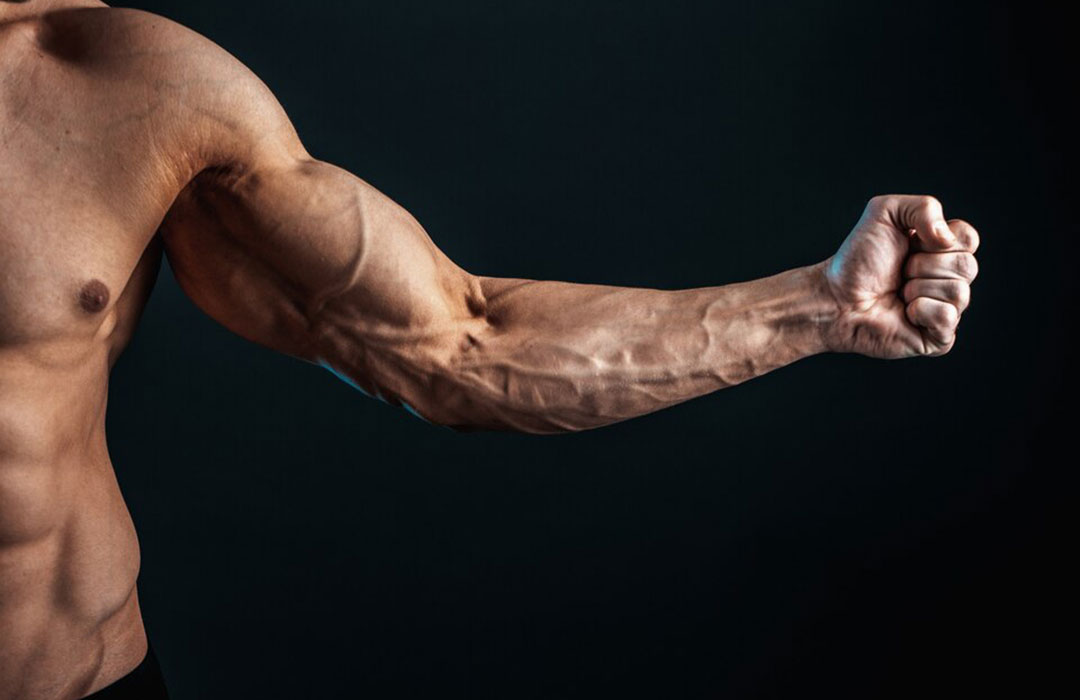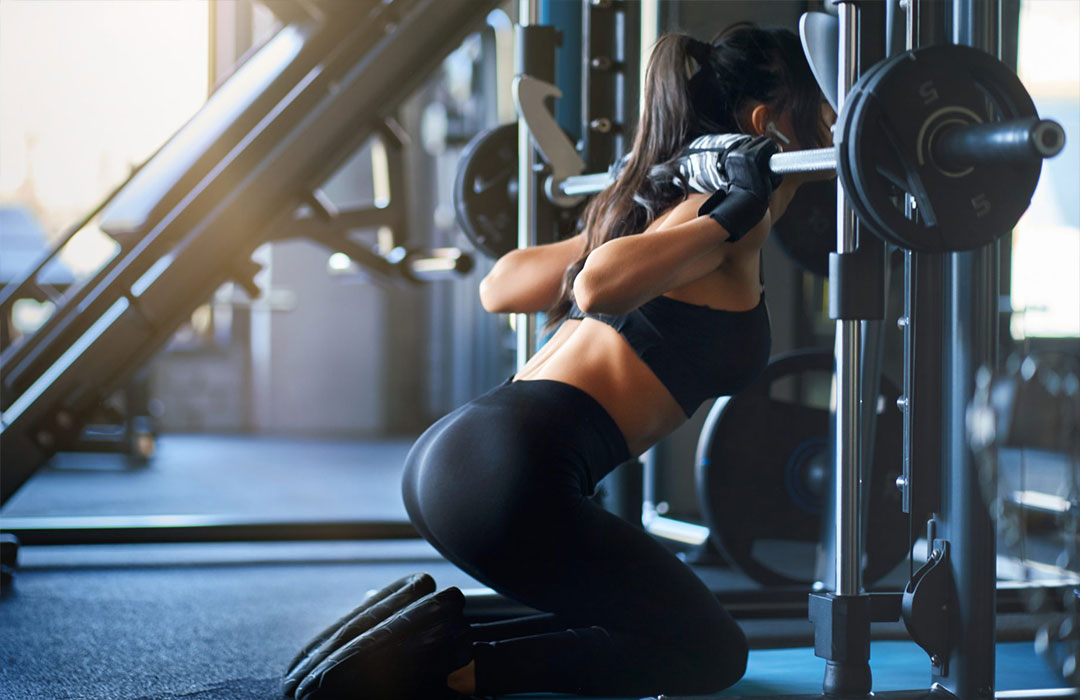Introduction
Are you ready to take your fitness journey to the next level? Look no further than the P90X legs and back workout program. This dynamic training regimen enhances your lower body strength and overall conditioning. This article will detail the P90X legs and back workout program, covering its exercises, techniques, and benefits. So, tighten your shoelaces and embark on a transformative fitness adventure!
P90X Legs and Back: An Overview
The P90X legs and back workout program is a key component of the popular P90X fitness system developed by Tony Horton. It focuses on building strength, stability, and endurance in the lower body and back muscles. P90X delivers a challenging and comprehensive fitness routine that yields remarkable results by combining resistance training, plyometrics, and flexibility exercises.
The Importance of Legs and Back Training
Strong legs and a powerful back are essential for overall functional fitness. They provide a solid foundation for various activities, such as sports, daily tasks, and even posture. The P90X legs and back workout program aims to improve the strength and stability of these muscle groups, enhancing your performance and reducing the risk of injuries.
Warming Up for P90X Legs and Back
Before diving into the intense workout, warming up your muscles and preparing your body for the challenges ahead is crucial. A proper warm-up routine can help prevent injuries and optimize your performance. Here’s a suggested warm-up sequence for your P90X legs and back workout:
- Jogging in place for 5 minutes to increase heart rate and blood flow.
- Dynamic stretching exercises, including leg swings, arm circles, and torso rotations.
- A set of light squats, lunges, and push-ups to activate the major muscle groups.
- Foam rolling or self-myofascial release to release tension and promote flexibility.
Phase 1: Foundation
1. Targeted Muscles
The foundation phase of the P90X legs and back program focuses on building a solid base of strength and endurance. The targeted muscles include:
- Quadriceps: The quadriceps are located in the front of the thigh and are responsible for knee extension.
- Hamstrings: Located in the back of the thigh, the hamstrings assist in knee flexion and hip extension.
- Glutes: The gluteal muscles are responsible for hip extension, abduction, and external rotation.
- Calves: The calf muscles aid in ankle plantar flexion.
2. Exercises
During this phase, you will perform various exercises that engage the legs and back muscles. Some of the key exercises include:
- Squats: This compound exercise targets the quadriceps, hamstrings, and glutes.
- Lunges: Lunges work the quadriceps, hamstrings, glutes, and calves.
- Deadlifts: Deadlifts primarily target the hamstrings, glutes, and lower back.
- Calf Raises: Calf raises focus on the calves and helps strengthen the lower leg muscles.
Phase 2: Strength
1. Targeted Muscles
The strength phase of the P90X legs and back program aims to increase muscular strength and power. The targeted muscles include:
- Quadriceps
- Hamstrings
- Glutes
- Calves
- Lower back
2. Exercises
In this phase, you will incorporate more challenging exercises to develop your strength further. Some of the exercises include:
- Bulgarian Split Squats: This exercise targets the quadriceps, hamstrings, and glutes.
- Single-Leg Deadlifts: Single-leg deadlifts engage the hamstrings, glutes, and lower back.
- Step-Ups: Step-ups work the quadriceps, hamstrings, glutes, and calves.
- Hyperextensions: Hyperextensions strengthen the lower back muscles.
Phase 3: Performance
1. Targeted Muscles
The performance phase of the P90X legs and back program focuses on maximizing power, agility, and athleticism. The targeted muscles include:
- Quadriceps
- Hamstrings
- Glutes
- Calves
- Lower back
2. Exercises
You will engage in dynamic and explosive exercises to enhance performance in this phase. Some of the exercises include:
- Plyometric Lunges: Plyometric lunges target the quadriceps, hamstrings, glutes, and calves.
- Power Cleans: Power cleans work the entire lower body and requires explosive power.
- Box Jumps: Box jumps engage the quadriceps, hamstrings, glutes, and calves.
- Pull-Ups: Pull-ups strengthen the back muscles, including the lats and rhomboids.
Tips for Maximizing Your P90X Legs and Back Workout
To make the most of your P90X legs and back workout, consider the following tips:
- Maintain proper form: Focus on technique and ensure correct posture throughout each exercise.
- Use appropriate weights: Choose weights that challenge you without compromising form.
- Gradually increase intensity: Progressively increase the intensity of your workouts as you build strength and endurance.
- Listen to your body: Pay attention to any signs of discomfort or pain and modify exercises as needed.
- Stay consistent: Stick to the program and complete all workouts as scheduled to see optimal results.
- Incorporate rest days: Allow your body to recover and repair by including rest days in your training schedule.
Legs and Back Workout
The Legs and Back workout is the core focus of the P90X fitness program. This training session targets and strengthens the major muscle groups in your lower body and back. You’ll work on building strength, endurance, and overall stability by incorporating various exercises that engage these areas. This workout’s combination of leg and back exercises helps improve your athletic performance, support daily activities, and enhance your overall fitness level.
In the Legs and Back workout, you can expect to perform exercises like squats, lunges, deadlifts, calf raises, pull-ups, and more. These movements are carefully selected to challenge your muscles and promote balanced development throughout your lower body and back. The workout progresses through different phases, each with its own set of exercises and intensity levels, ensuring consistent progress and preventing plateaus.
As you engage in the Legs and Back workout, focus on maintaining proper form and technique for each exercise. Pay attention to your body’s alignment and avoid excessive strain on your joints. Additionally, don’t forget to warm up adequately before starting the workout to prepare your muscles for the challenges ahead and reduce the risk of injury.
Exercise Order for P90X Legs and Back Workout
The P90X Legs and Back workout is a comprehensive training session that targets the major muscle groups in your lower body and back. The exercise order is strategically designed to progressively challenge your muscles and provide a balanced workout that enhances strength, stability, and conditioning.
- Balanced Lunges: Begin with balanced lunges, an excellent exercise to activate your quadriceps, hamstrings, and glutes. This movement helps improve lower body strength and stability while enhancing balance and coordination.
- Calf Raise Squats: Next, engage in calf raise squats to target your calf muscles and thighs. This compound exercise combines squats with calf raises to strengthen the lower and upper legs.
- Reverse Grip Chin-Ups: The focus shifts to your back muscles with reverse grip chin-ups. This challenging bodyweight exercise targets your lats, rhomboids, and biceps, promoting upper body strength and definition.
- Super Skaters: Super skaters introduce lateral movements to the workout, engaging your glutes and inner thighs. This exercise improves agility and balance while strengthening your lower body.
- Wall Squat: Challenge your quads and glutes with the wall squat, a static hold against a wall. This isometric exercise helps build endurance in your lower body.
- Wide Front Pull-Ups: Returning to back exercises, wide front pull-ups target your lats and provide a wider grip variation for a different range of motion.
- Step-Back Lunges: Step-back lunges add variation to the lunge movement, further targeting your quads, hamstrings, and glutes. This dynamic exercise enhances leg strength and stability.
- Alternating Side Lunges: Incorporate alternating side lunges to work on your inner and outer thighs. This lateral movement complements the previous exercises, promoting overall lower body development.
- Close Grip Overhead Pull-Ups: Focus on your back muscles again with close grip overhead pull-ups. This grip variation places more emphasis on your biceps and upper back.
- Single-Leg Wall Squat: Challenge your lower body further with the single-leg wall squat. This exercise improves balance, stability, and strength in each leg individually.
- Deadlift Squats: Deadlift squats combine two powerful movements, targeting your hamstrings, glutes, and lower back. This exercise improves hip and lower body strength.
- Switch Grip Pull-Ups: Switch grip pull-ups add variety to your back workout, targeting different muscle fibers in your lats and biceps.
- Three-Way Lunge: The three-way lunge incorporates forward, side, and reverse lunges, engaging various muscle groups in your lower body. This compound movement boosts overall leg strength and flexibility.
- Sneaky Lunge: The sneaky lunge challenges your balance and stability while working on your quads and glutes. This dynamic movement improves your athleticism.
- Reverse Grip Chin-Ups: Returning to back exercises, this variation of chin-ups continues to target your upper back and biceps.
- Chair Salutations: Chair salutations introduce a yoga-inspired movement to the workout, providing a brief active recovery and stretching for your lower body.
- Toe Roll Iso Lunge: The toe roll iso lunge focuses on your calves and quads, promoting ankle stability and lower leg strength.
- Wide Front Pull-Ups: Engage your back muscles again with wide front pull-ups, emphasizing a wider grip for a different challenge.
- Groucho Walk: The Groucho walk is a fun and effective exercise that activates your quads and glutes, mimicking walking in a squat position.
- Calf Raises: Calf raises isolate and target your calf muscles, helping to improve lower leg strength and stability.
- Close Grip Overhead Pull-Ups: Resume close grip overhead pull-ups to continue working on your upper back and biceps.
- 80-20 Speed Squat: The 80-20 speed squat introduces a faster tempo squat, providing a cardiovascular element to the workout while still targeting your lower body muscles.
- Switch Grip Pull-Ups: Conclude the workout with one final set of switch grip pull-ups, challenging your back and biceps for a complete upper body burnout.
Frequency and Modifications
Understanding the Frequency and Modifications in the P90X Legs and Back program is essential to tailor the workout to your needs and abilities. The frequency refers to how often you should perform the Legs and Back workout during a week, while modifications allow you to adjust the exercises based on your fitness level or physical limitations.
Participating in the Legs and Back workout two to three times a week is recommended for most individuals. This frequency provides enough muscle recovery and growth time while maintaining consistency in your training. However, listen to your body and adjust the frequency according to your recovery rate and fitness goals.
Modifications are vital in ensuring that everyone can benefit from the P90X Legs and Back program regardless of their fitness level. If you’re a beginner or have certain physical limitations, you can modify exercises by using lighter weights, adjusting the range of motion, or using resistance bands instead of free weights. You can safely and effectively engage in the program by modifying appropriately and gradually building your strength and endurance.
The Good Parts of P90X: Legs and Back
The P90X Legs and Back program has several notable benefits, making it a popular choice among fitness enthusiasts. Here are some of the Good Parts of the P90X Legs and Back program:
- Comprehensive Lower Body and Back Training: The program’s focus on leg and back exercises provides a well-rounded workout targeting major muscle groups in the lower body and back, improving strength and stability.
- Variety of Exercises: The P90X program incorporates various exercises, from classic strength training movements like squats and lunges to challenging plyometric exercises. This variety keeps the workout engaging and prevents boredom.
- Progressive Phases: The program is structured into three phases: Foundation, Strength, and Performance. Each phase gradually increases the intensity, ensuring progressive improvement and preventing training plateaus.
- Convenience: P90X allows you to work out in the comfort of your home, eliminating the need for a gym membership or commuting to a fitness facility.
- Guided Workout: The program has instructional videos guiding you through each exercise with proper form and technique, enhancing your overall workout experience.
The Bad Parts of P90X: Legs and Back
While the P90X Legs and Back program offers many benefits, it’s essential to be aware of some potential drawbacks or challenges:
- Intense Workouts: The P90X program is known for its high-intensity workouts, which may be too demanding for beginners or individuals with certain health conditions. It’s crucial to consult a fitness professional or healthcare provider before starting the program, especially if you’re new to intense exercise.
- Time Commitment: P90X workouts can be lengthy, often lasting 60 to 90 minutes. This time commitment may be challenging for those with busy schedules or limited time for exercise.
- Equipment Requirements: The program requires various exercise equipment, such as dumbbells, resistance bands, and a pull-up bar. While these are common fitness tools, some individuals may find the initial investment in equipment a potential barrier.
- Muscle Soreness: Due to the intensity of the workouts, muscle soreness and fatigue are common, especially during the program’s initial phases. Allowing ample time for recovery and listening to your body’s signals is essential.
- Lack of Personalization: While the P90X program offers modifications for different fitness levels, it’s still a one-size-fits-all approach. Personalization based on individual goals and fitness levels may require additional adjustments.
The Verdict
The P90X Legs and Back program is a comprehensive and challenging workout regimen that can yield impressive results for individuals seeking to improve lower body strength, stability, and overall conditioning. The program’s structured approach, various exercises, and guided workouts are valuable assets for many fitness enthusiasts.
However, it’s essential to consider your individual fitness level, preferences, and any potential limitations before committing to the P90X program. Beginners or those with certain health conditions may need to start with a more gradual fitness routine and work up to the intensity of P90X.
Ultimately, the success of the P90X Legs and Back program depends on your commitment, consistency, and willingness to push yourself to achieve your fitness goals. If you’re ready for a challenging and transformative fitness adventure, P90X Legs and Back may be the perfect fit. Listen to your body, modify exercises as needed, and celebrate your progress. Happy training!
Frequently Asked Questions (FAQs)
-
How many times a week should I do the P90X leg and back workout?
Performing the P90X legs and back workout two to three times weekly is recommended. This frequency allows for proper recovery and muscle growth while maintaining consistency in your training.
-
Can beginners participate in the P90X legs and back program?
Yes, beginners can participate in the P90X legs and back program. However, it is important to start at an appropriate fitness level and gradually increase the intensity as your strength improves. Beginners may need to modify certain exercises or use lighter weights initially.
-
What equipment do I need for P90X legs and back training?
You will need essential exercise equipment for the P90X legs and back workout program, such as dumbbells or resistance bands, a pull-up bar, and an exercise mat. Additional equipment, such as a stability ball or a weight bench, may be beneficial but is not essential.
-
How long do typical P90X legs and back workouts last?
A typical P90X leg and back workout can last approximately 60 to 90 minutes, depending on your fitness level and the intensity at which you perform the exercises. It is important to allocate enough time for warm-up, workout, and cool-down.
-
Is P90X legs and back suitable for women?
Yes, P90X legs and back suits women looking to build strength, tone their muscles, and improve their fitness. The program can be modified to accommodate individual fitness levels and goals.
-
Can I modify the exercises if I have limitations or injuries?
Yes, You can modify the P90X legs and back program exercises if you have limitations or injuries. It is essential to listen to your body and work within your capabilities. Consult with a fitness professional or modify exercises to ensure safety and effectiveness.
Conclusion
The P90X legs and back workout program offers a comprehensive and challenging training regimen to enhance lower body strength, stability, and conditioning. Following the program’s phases and incorporating the recommended exercises can significantly improve muscle strength, power, and athletic performance. Remember to warm up properly, maintain proper form, and stay consistent with your training to maximize results. So, lace up your sneakers and get ready to unleash the power of your legs and back with the P90X program!




